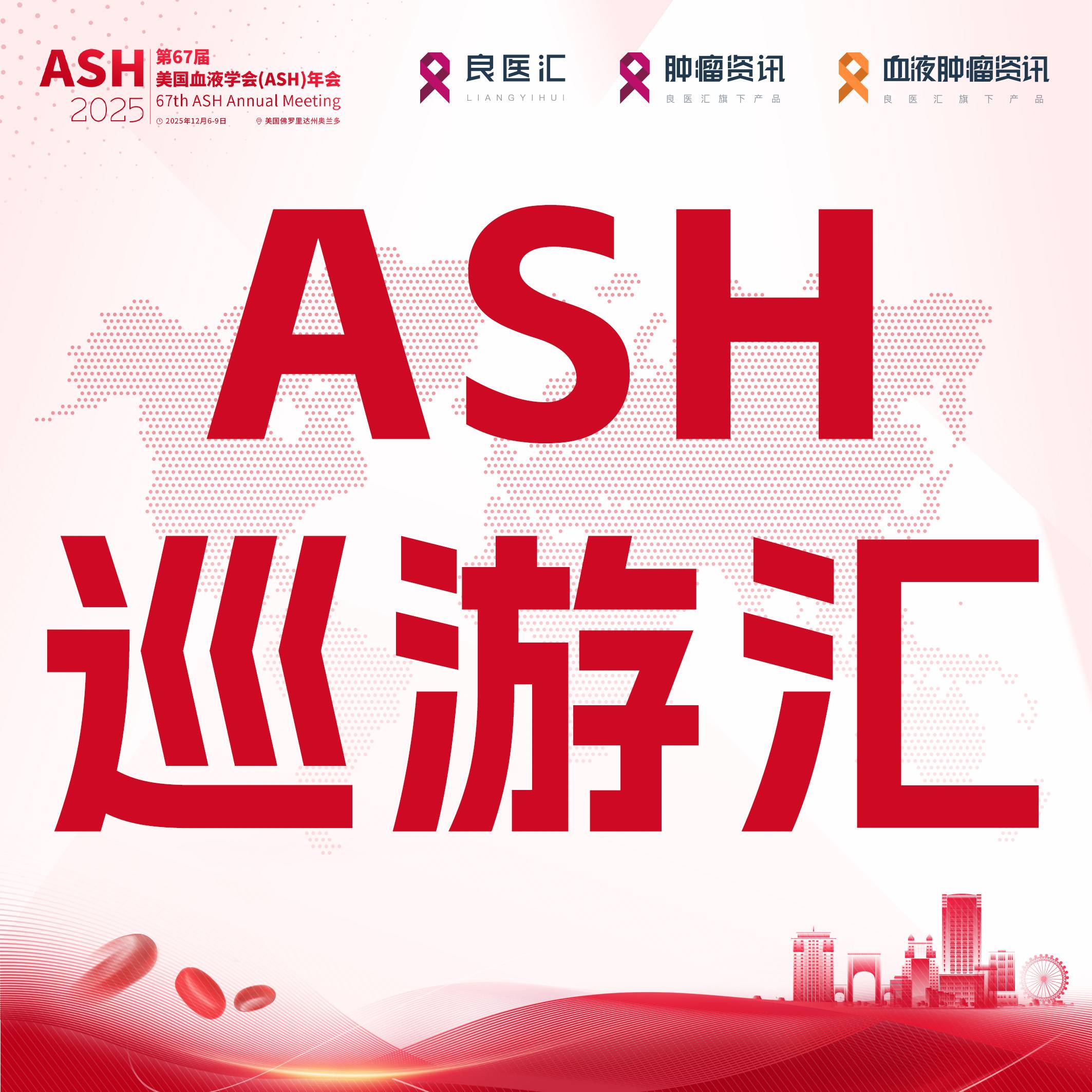
以下内容原文发布于AACR官方博客《Cancer Research Catalyst》, 中文内容仅做参考,请点击文末“阅读原文”,阅览原文内容。
2022年,新冠肺炎(COVID-19)疫情的紧张形势开始平息,这将是被铭记的一年。近70%的美国人现已完成COVID-19疫苗的基本接种程序;现有的治疗措施可减轻疾病的严重程度;传染性强但致病性较低的奥密克戎变异毒株似乎正在推动COVID-19从大规模流行性疾病转变为地方病。
患有血癌和某些实体恶性肿瘤的患者以及正在接受某些癌症治疗的患者仍然比普通人群的感染和重症风险要高,而且对疫苗的抗体应答更弱。然而,最新的研究显示,血癌患者对疫苗有强烈的T细胞应答,这激发人们利用T细胞介导的免疫研发疫苗。
在癌症研究领域,2022年取得了一些重要的进展。美国食品药品监督管理局(FDA)批准了40种用于治疗肿瘤的药物,其中12种是新的、首次应用在人体的分子。最近的一篇博客总结了去年FDA的批准情况。
其他可喜的新闻还有:一项具有开创性的、可能改变临床实践的免疫疗法临床试验结果表明,给具有某种DNA修复缺陷的局部晚期直肠癌患者使用免疫检查点抑制剂,产生了完全的临床应答,且未见残留病灶,使患者免于放化疗和手术。
得益于过去几十年癌症研究和治疗方面取得的进展,2022年初,美国癌症幸存者的人数超过了预估的1800万人。尽管在癌症检测和治疗方面取得了进展,但要减少可预防的癌症带来的负担,仍有许多工作要做。
美国癌症研究协会(AACR)参与了有关癌症风险因素,特别是吸烟的公开辩论,并与美国临床肿瘤学会一起发布了一份开创性的联合政策声明,该声明聚焦了最新的有关使用电子烟和其他电子尼古丁输送系统(ENDS)方面的最新研究。该声明还呼吁政策制定者和监管机构采取行动,限制ENDS的使用,并支持循证戒烟疗法。
按照AACR博客的新年传统,一组专家将被邀请讨论他们研究领域的最新进展,并预测2023年在免疫疗法、精准医学、癌症预防和早期检测、患者权益倡导和癌症健康差距方面的后续重大进展。
了解更多内容,请阅读以下原文。
Experts Forecast Cancer Research and Treatment Advances in 2023
By Silvia Licciulli, PhD
The year 2022 will be remembered as the time when the emergency phase of the COVID-19 pandemic began to subside. Nearly 70 percent of the U.S. population has now completed the primary COVID-19 vaccination series; treatments are available to reduce the severity of the disease; and the highly contagious but less pathogenic Omicron variant seems to be driving the transition toward an endemic phase.
Patients with blood cancers and some solid malignancies and those receiving certain types of cancer treatments remain at higher risk of infection and severe disease than the general population and display a reduced antibody response to vaccines. However, recent studies have shown robust T-cell responses to vaccines in patients with blood cancer, spurring research to develop vaccines that leverage the T-cell-mediated immunity.
In the cancer research world, 2022 brought about some important developments. The U.S. Food and Drug Administration (FDA) issued 40 drug approvals for oncology indications, 12 of which were new, first-in-human molecules. A recent blog post summarizes the past year’s FDA approvals.
Among other promising news, the results of a groundbreaking and potentially practice-changing immunotherapy clinical trial showed that an immune checkpoint inhibitor given to patients with locally advanced rectal cancer with a certain defect in DNA repair led to a complete clinical response with no evidence of residual disease, sparing the patients from chemoradiotherapy and surgery.
Thanks to the advances in cancer research and care in the past decades, in early 2022, the number of cancer survivors in the U.S. surpassed an estimated 18 million. Despite the progress we have made in detecting and treating the disease, much remains to be done to reduce the burden of preventable cancer.
The American Association for Cancer Research (AACR) participated in the public debate on cancer risk factors, specifically smoking, with the release of a seminal joint policy statement with the American Society of Clinical Oncology, highlighting the latest research on the use of e-cigarettes and other electronic nicotine delivery systems (ENDS). The statement also called on policymakers and regulatory authorities to take action to limit ENDS use and support evidence-based smoking cessation therapies.
In keeping with a new-year tradition on the AACR blog, we asked a group of experts to discuss the state of the art in their fields of research and to share their predictions for the next significant developments in the year 2023 in immunotherapy, precision medicine, prevention and early detection, patient advocacy, and cancer health disparities.
Cancer Immunotherapy in 2023
Precision Medicine in 2023
Cancer Prevention and Early Detection in 2023
Patient Advocacy in 2023
Cancer Disparities Research in 2023
CANCER IMMUNOTHERAPY IN 2023
AACR President-Elect Philip D. Greenberg, MD, FAACR, editor-in-chief of the AACR journal Cancer Immunology Research, professor and head of the Program in Immunology, Clinical Research Division, and the Rona Jaffe Foundation Endowed Chair at the Fred Hutchinson Cancer Center, believes this is a time for optimism in cancer research. “I think the ability to create new therapies that benefit more patients is here right now,” he said.
In addition to increasingly effective and broadly used immunotherapies, Greenberg expects that multiple areas of research will expand dramatically in the coming year, including gene editing, epigenetics, structural biology for protein design, and medicinal chemistry, which is allowing researchers to target cancer proteins once considered undruggable.
Within the realm of cancer immunotherapy, Greenberg predicted an expansion in the use of combinations of agents that target independent cellular pathways and can work synergistically.
The field of engineered cell therapies, he added, is progressing very rapidly. “This area of cancer therapies is still in its infancy, but the technologies are exploding, and the capacity to generate cells and give them to patients is expanding enormously,” he said. “We can now modify the cells to improve their function and survival after infusion into patients and their ability to target the cancer. The field is going to look very different in 2023 and 2024.”
Adoptive cell therapies, Greenberg pointed out, provide important advantages over other approaches. “We can engineer very potent immune responses outside the body, expand the cells that mediate those responses to very large numbers, and infuse them into a patient to create a very potent, de novo immune response against a desired target,” he said. “Importantly, this strategy can be effective even in a body that has already encountered the target antigens and whose immune system is not responding to them.”
“We can now better dissect the cell composition of the tumor microenvironment, identify the inhibitory signals that interfere with immune function, and engineer cells to overcome some of those obstacles,” Greenberg explained. “We can also turn those inhibitory signals into positive signals by rewiring how the cells perceive them, essentially taking advantage of how tumors evade immune responses.”
Thanks to these advances, the adoptive cells are rendered able to thrive in a tumor environment where the natural immune response would not. Greenberg emphasized that these advances, coupled with improved selectivity toward tumor-specific targets, will have enormous impact on the development of effective adoptive cell therapies for solid tumors, which, so far, has been a challenge.

According to Greenberg, the use of multi-omic strategies, including spatial transcriptomics that provides a snapshot of how the cells interact in communities and neighborhoods within the larger tumor microenvironments at the single-cell level, is very instructive for the development of increasingly effective cell therapies.
“We already have clinical trials ongoing in pancreatic cancer, and multiple other groups are conducting trials targeting solid tumors,” Greenberg said. “I am very optimistic that we will see enormous advances and increasing numbers of cell therapies brought into the clinic in 2023, and that this will lead to an expansion of the number of tumors that can be treated effectively in the coming years.”
Another area that Greenberg expects will advance in the new year is the development of drugs targeting inhibitory molecules in the tumor microenvironment. “I think we will start seeing increasing numbers of those drugs tested in clinical trials, particularly as components of combination therapies, and we are going to learn how to use them more effectively,” he said.
Greenberg is also looking forward to advances in cancer vaccines that will overcome some of the challenges that still impact this approach and will bring it closer to clinical use.
“The mRNA vaccine technology that works so effectively against COVID-19 was developed years ago for cancer vaccines, though the initial efforts were minimally successful,” he said. “The success of the COVID-19 vaccines has highlighted the big difference between developing a vaccine against a tumor that already exists in the body and is not being effectively targeted by the immune system versus one that protects us from a pathogen that contains a genome completely different from the human genome.
“However, from the initial lack of success of cancer vaccines has come a lot of information about why we were not obtaining stronger responses, and what can be done to overcome some of the hurdles to make increasingly effective vaccines,” Greenberg added.
Thanks to deep sequencing, it is now possible to rapidly and efficiently identify what is unique in a patient’s cancer and to create personalized vaccines that incorporate those differences.
Greenberg explained that getting the immune system to respond to these vaccines is challenging, because when they are given to patients, the tumor has already developed strategies to turn off or evade the immune response. “Researchers are investigating ways to reinvigorate and expand the immune responses,” he said, adding that different promising strategies are being pursued to make the vaccines more immunogenic, for example, using cytokines and blocking certain inhibitory pathways.
“I think cancer vaccines will be an important part of cancer therapies in the future,” Greenberg concluded.
PRECISION MEDICINE IN 2023
“There are many areas of excitement in cancer research and therapeutics,” began Lillian Siu, MD, FRCPC, who is a founding editor-in-chief of the newest AACR journal, Cancer Research Communications; senior medical oncologist at Princess Margaret Cancer Centre; and professor of medicine at the University of Toronto. “One area to watch for new developments in 2023 is the dynamic monitoring of the whole cancer journey, from detection to interception to monitoring of resistance in metastatic cancer, using new technologies, such as circulating tumor DNA (ctDNA) and other circulating biomarkers.
“Molecular residual disease trials are coming of age, and I expect they will be game changers in oncology. We now have ultrasensitive technologies to detect and measure microscopic residual disease in patients who have undergone definitive treatment,” she said. “This will allow us to apply interception strategies to eradicate cancer in those high-risk patients.”
In this type of trials, Siu explained, clearance of ctDNA can be used as a surrogate endpoint in addition to long-term, traditional endpoints such as relapse-free survival and overall survival.
A second area experiencing rapid growth, Siu continued, is precision immuno-oncology. “All of us are now familiar with the term ‘precision medicine,’ referring to the use of targeted therapy,” she said. “Precision immune-oncology seeks to better understand the immune system, the complexity of the tumor microenvironment, and the tumor signaling pathways that affect the response to therapy, to allow us to use immunotherapy in the most precise way possible.”
A session at the AACR Annual Meeting 2022 included several examples of the latest advances in precision immune-oncology.
Siu is also excited about the new generation of immune checkpoint inhibitor molecules, for example, the novel CTLA4 inhibitors modified to better target the myeloid component, and the field of immune-oncology (IO) combinations. “We have been using immune checkpoint inhibitors as single agents for almost a decade now, and so far, IO therapy combinations have proven extremely challenging and have not been successful in overcoming primary and acquired resistance. This is partly due to the lack of appropriate preclinical models, as it is extremely hard to recapitulate the human immune system in a petri dish or even in animals,” she said. “However, the field is in constant development, and there are now new model systems that may allow us for better prediction of the response in humans before we give the combinations to patients.”
To better characterize the effect of the IO combinations, researchers are using technologies such as single-cell sequencing to learn more on the responses at the singe-cell level, and spatial transcriptomics to analyze the geographical relationships between multiple biomarkers on the same tissue sample and monitor the immune responses over time.
“With the novel technologies we can learn a lot more and we are going to see more strategic IO combinations,” she said.
In Siu’s opinion, there are two drug classes of active interest in the modern era of precision medicine. The first one is represented by antibody drug conjugates (ADCs), which combine the target-specificity of monoclonal antibodies and the cancer-killing activity of cytotoxic drugs. “This is definitely a new pillar of therapeutics, where many pharmaceutical and biotechnology companies are actively developing a lot of novel tumor-specific targets, better linkers, and new payloads that have dramatic antitumor activity.”
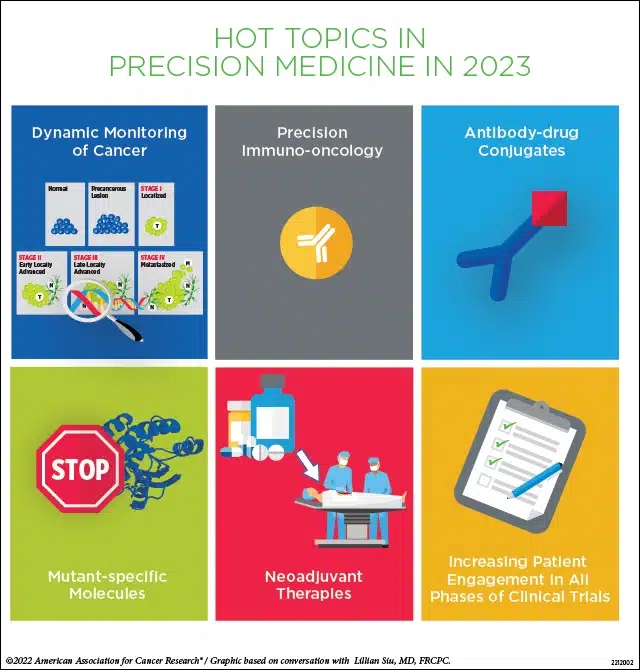
These developments, Siu clarified, are expected to improve the antibody/drug ratio, or the amount of drug that can be loaded into the molecules, making the ADCs more potent and resulting in superior therapeutic indexes. “There are going to be many early-phase clinical trials of these new ADCs,” Siu added.
The next drug class on Siu’s list of exciting developments are mutant-specific molecules. “There are now strategies to sharpshoot and target very specific mutants in various oncogenes,” she said.
By selectively inhibiting the mutant protein and sparing the wild type protein, such molecules may also avoid the side effects associated with systemic suppression of the protein’s function observed with some traditional molecularly targeted therapies, Siu explained.
In addition to the first-in-class KRAS G12C mutant inhibitor sotorasib (Lumakras), which was approved in 2021 for advanced non–small cell lung cancer harboring the G12C mutation, more KRAS mutant-specific molecules are emerging.
Other mutant-specific molecules are advancing in their development path, including those targeting the phosphatidylinositol-3 kinase, fibroblast growth factor receptor, p53, and MYC pathways. According to Siu, we will likely see more emerge in the therapeutics arena.
Lastly, Siu discussed the latest developments in clinical trial design, as well as the importance of patient engagement.
“A very interesting space that we should watch for future advances in how we schedule the administration of systemic anticancer agents is the field of neoadjuvant therapy,” Siu said. “This area has attracted a lot of attention in lung cancer and melanoma, but it is going to be applied to other tumor types, where giving therapy, especially with immunotherapy combinations, before definitive treatment with surgery or radiation may have long-term clinical benefit.”
The idea is to use immunotherapy to attack tumors when they are more likely to respond, Siu noted.
“In 2022, we saw a great example of this strategy, with a clinical trial conducted in patients with rectal cancer with microsatellite instability, who experienced complete responses to immunotherapy and were therefore spared from having surgery. There is a lot of interest in applying that strategy for organ preservation, so that patients do not have to undergo disfiguring treatments, such as rectal surgery or head and neck surgery,” Siu said. “I don’t think we are ready yet to apply this approach broadly, but certainly the results from this small study were a wake-up call for a lot of us in the field, indicating that sometimes drugs could cure a cancer and that we may avoid putting patients through more invasive procedures.”
Siu emphasized that randomized trials will be needed to test the neoadjuvant therapy against the standard of care in terms of survival outcomes.
Another critical development in clinical trial design relates to increasing patient engagement in all phases of the process. “We need to engage our patients to understand, for example, if a biopsy is feasible, or if they prefer a liquid biopsy, or if going to the cancer center five times a month is acceptable. These are things that we have always assumed, but we need better protocols that ask these questions and obtain patients’ input,” she said.
Siu added that, in support of this, several granting agencies now do not accept grant or trial applications that do not include patients’ voice.
She highlighted the importance of including patient-reported outcomes in the trial endpoints. “In some pioneering studies in this area, patients are using their smartphone or tablet to report how they feel and how treatment is affecting their day-to-day life at home and at work, and not just on the days they visit the clinic. This allows us to assess tolerance to the treatment, not just toxicity.”
Ensuring equity and diversity is a highly relevant aspect of clinical research. “Study results are much more likely to be applicable to the general population if they are mindful to include all patient groups who fulfill eligibility criteria regardless of race, ethnicity, and social background,” Siu stressed. “Every effort needs to be made to enable the enrollment of underserved and underrepresented patient populations in clinical trials.”
CANCER PREVENTION AND EARLY DETECTION IN 2023
We are in a decisive moment for cancer prevention, early detection, and interception, according to Timothy Rebbeck, PhD, member of the AACR Cancer Prevention Working Group Steering Committee, Vincent L. Gregory Jr. Professor of Cancer Prevention, and director of the Zhu Family Center for Global Cancer Prevention at Harvard T.H. Chan School of Public Health and Dana Farber Cancer Institute. “We have built a strong foundation in basic biology and understanding of the mechanisms of cancer progression from the earliest phases to invasive disease and metastasis,” Rebbeck said. “That basic biological information is now going to inform how we can predict the risk of cancer, intercept it, and detect it at an early stage.”
One area that he expects will take off in the coming year is that of multicancer detection (MCD) assays, which aim to detect signals of more than one type of cancer in early, more treatable stages and from a single blood sample through liquid biopsies.
Rebbeck foresees that early detection technologies are going to change the landscape of cancer as we know it. “This area is moving very quickly: There are at least two dozen companies developing MCD tests, and the National Cancer Institute will fund a research network to evaluate the use of these tests,” he said.
Although the results from this research will not be available for a few years, he explained, some of these tests are already commercially available and are being used in the clinic.
He cautioned that most of them don’t yet have the ability to detect cancers very early. “We are not quite there yet, but there is a great amount of promise in these technologies, and a lot of research is ongoing to increase the sensitivity of the tests to detect cancers early,” he said.
Rebbeck added that the cancer community will have to catch up to these fast developments to understand the medical and social implications of these tests and establish the care pathways required to achieve equitable benefit from a screening test to a diagnosis and treatment for all people.
Another exciting area of technological development for early cancer detection is molecular imaging, or the use of molecular biomarkers to visualize changes at the cellular level, such as metabolism or oxygen consumption by cells, before structural changes become apparent through more traditional imaging approaches.
Using nanotechnology strategies reminiscent of science fiction, researchers are also developing nanoprobes that might be ingested, injected, or even tattooed into the skin, to sense and signal the presence of cancer.
“These new technologies are still in their infancy, but such personalized approaches to prevention and early detection have the potential to enhance the more traditional, population-based strategies and to fill the gaps in cancers for which effective screening methods are currently not available, such as pancreatic and ovarian cancer,” said Rebbeck.
He highlighted that risk stratification plays an important role in the success of the early detection strategies. “Some prevention approaches are applicable to the entire population—for example, everybody should stop smoking, regardless of their cancer risk,” Rebbeck said. “However, many technologies and interventions for early cancer detection will be expensive or difficult to implement, so their use has to be maximized in people who are at the highest risk and can really benefit from them. We also want to avoid over-diagnosis and over-intervention.”
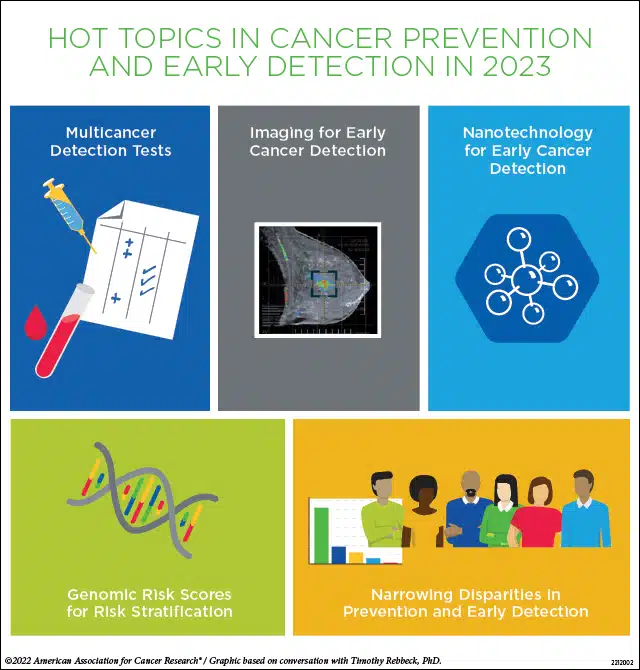
In the past decade, researchers have gained a vast amount of knowledge about the genes that are involved in cancer susceptibility and have now developed models to predict what combinations of gene alterations confer risk for certain cancers.
“We are now studying how we can use genomic risk scores for risk stratification and to monitor cancer, but also to detect cancer early,” said Rebbeck. “These genomic risk scores are promising, but they haven’t yet been translated into prevention strategies. I hope that, too, is on the horizon.”
One important caveat in the use of genomic risk scores is that they are not always transferable across populations and are often built based on data predominantly collected among people of European descent. Rebbeck stressed the importance of increasing diversity in the study populations so that the discoveries are applicable to all and are translated in the most accurate way.
Overall, he added, many of the technologies and tools for cancer prevention, early detection, and even treatment can create or exacerbate disparities if they are not developed and implemented in a way that benefits everyone.
One example is breast cancer. As Rebbeck pointed out, before the advent of mammography and adjuvant endocrine therapies, Black and white patients had comparable mortality rates. In the past 30-40 years, when these strategies became commonplace, breast cancer rates and mortality rates have dropped dramatically in white women but not in Black women. “In part, that is due to the fact that breast tumors have different features in Black and white women that impact the efficacy of screening and treatment. Also, mammography and the appropriate treatment strategies have not been applied equitably; therefore, not all groups have benefited equally from these strategies,” said Rebbeck.
“As we develop new screening, early detection, and prevention strategies, we have to consider how they are going to be applied in all populations, and their implementation may have to be tailored to the different groups,” he emphasized.
According to Rebbeck, that process should include education and cultural awareness about what different groups of people need, and what strategies they accept to lower their cancer risks.
PATIENT ADVOCACY IN 2023
“The patient advocacy movement started with the goal of getting more resources into cancer research, but ‘resources’ means much more than money. It also means leveraging the intellectual resources of patient advocates, helping to identify the right patients for clinical trials, and making sure patients understand the new diagnostic technologies and therapies, so that they can receive the best care,” said Anna Barker, PhD, FAACR, chair of the AACR Scientist↔Survivor Program and chief strategy officer at the Lawrence J. Ellison Institute for Transformative Medicine, University of Southern California. For Barker, patient advocacy melds research with care.
We asked her to discuss the main themes that will shape the landscape of patient advocacy in 2023.
One area in which patients and advocates can make a difference for research, she explained, is in ensuring their tumor samples are collected, accurately characterized at the molecular level, and entered into an appropriate database. “Larger patient data sets support learning systems that will drive the development of more patient-centric targeted cancer therapeutics and diagnostics.”
Another domain of critical patient advocate involvement, Barker indicated, will be clinical trials. “We are still under-enrolling patients in clinical trials, primarily because of a lack of education—people don’t fully understand the value of participating, and sometimes physicians don’t have time or resources to help them navigate the options,” she said. “I think this is going to be a big opportunity for patients and patient advocates to push the envelope for higher enrollment in trials that will allow us to identify more efficacious drugs, biologics, and combinations.”
Barker emphasized the power of education and the importance of having a mutual learning system in place through which researchers and patient advocates can learn from each other.
“AACR was one of the first organizations to enable patient advocates and survivors to contribute to and participate in research, and to empower them to become patient scientists,” Barker added. “Increasingly, patient advocates are extraordinarily well educated and are leveraging the power of cancer research. They do their homework, and many are incorporating sophisticated molecular information into their education programs.”
In fact, many of the leaders of advocacy organizations, who often represent hundreds or even thousands of patient advocates, participate in scientific conferences and initiatives and bring the information they acquire back to their community.
“I think it is going to be critical that patient advocates increasingly partner with scientists to ensure that the education they are receiving and delivering is on point and up to date,” Barker said. “On the other hand, scientists and physicians should take the time to discuss how to optimize the collection and use of patient samples, what that means to each patient in terms of treatment, and how research can inform every step of a patient’s cancer journey. This takes time, and the results may not be obvious right away, but when you empower patient advocates, they will work to inform both their constituencies and the research communities, which increases everyone’s understanding of cancer.”
For example, the topic of cancer survivorship is now part of the research and patient advocacy agendas, and Barker hopes that scientists will do their part in educating patients about the importance of monitoring for secondary cancers and long-term toxicity from treatment.
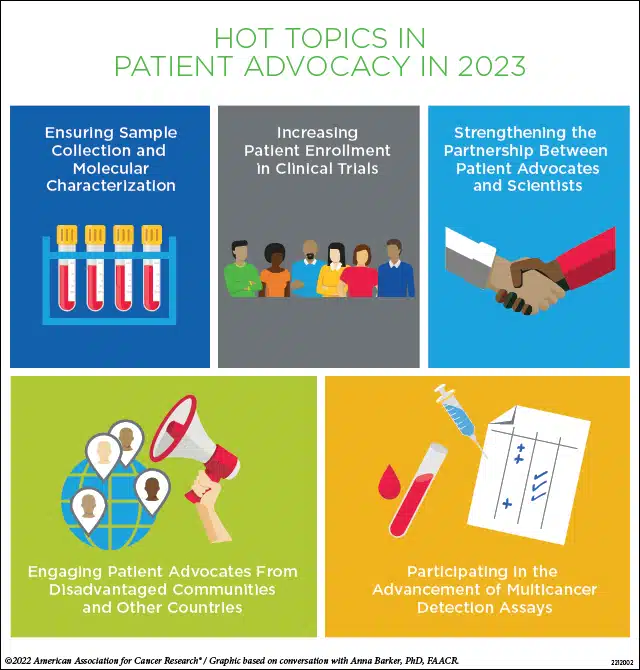
A larger cancer survivor population will also require some policy changes to ensure access to therapy for everyone and to lower the cost of treatment, especially for disadvantaged and underserved populations, including older patients who often have comorbidities. “Patient advocates are the most effective ambassadors for policy change,” Barker said. “I am looking forward to seeing what changes will happen in the next few years.”
Engaging patients and patient advocates from these disadvantaged communities is another key priority for the near future. “Until we can equitably deliver the best cancer care to the communities that have been underserved so far, we are not going to achieve our goal of reducing the cancer burden in our lifetime,” Barker said.
She also highlighted that it will be important to engage the patient advocacy communities in other countries. “Over the years, AACR has strived to expand our model of scientists and survivors working together, and this model has become of high interest to a lot of countries.”
According to Barker, patient advocates will play a critical role in the relatively new area of multicancer early detection. “It is still very early, and it will take time to prove how valuable these assays are, but this is an active area of research that is developing quickly. In my opinion, if successful and managed appropriately, it could be transformative and will create a whole new approach to preventing and downstaging cancer, which offers opportunities to cure more patients in the future,” Barker said.
She stressed that having patient advocates at the table is going to be important in determining how to best use the data obtained through these assays, how to integrate the information into a patient’s care, and how to educate people about this new approach.
“We are at an inflection point in cancer research in which we really need participation of patients and patient advocates as we’ve never needed it before. I hope we have built relationships between scientists and patient advocates that will get stronger and stronger in years to come,” Barker concluded.
CANCER DISPARITIES RESEARCH IN 2023
Advances in immuno-oncology will likely dominate cancer disparities research next year, according to Melissa B. Davis, PhD, member of the AACR Minorities in Cancer Research Council, associate professor of cell and developmental biology research, and scientific director of the International Center for the Study of Breast Cancer Subtypes at Weill Cornell Medical College. “We are starting to uncover the population-level variation in the tumor immune landscapes across different cancer types,” she said.
Similarly, the field is now delving into the role of ancestry in genomic diversity across populations. “I think that is going to be a hot topic, and we will see a vast amount of data coming out next year from population-level whole genome and whole exome sequencing projects, which will begin to address the broad diversity in patients,” Davis explained. “This will fuel our ability to identify genetic drivers that might have ancestry-specific functional consequences that impact a plethora of mechanisms, ranging from DNA repair to metabolism.”
Artificial intelligence is also playing an increasingly important role, according to Davis, and will be applied to imaging, for histology and diagnostics, and to informatics data mining, related to the development of algorithms to identify genetic drivers of tumor biology.
Dissecting the intricate contribution of intrinsic biologic factors and external socioeconomic and environmental factors on cancer health disparities is a big challenge of our time.
Davis discussed the concept of oncologic anthropology, introduced by her research partner Lisa Newman, MD, MPH, which uses global approaches to understand how the ancestral origins of people, as well as their lived experience, significantly influence cancer incidence, severity, and mortality within a population.
“We can measure the differences at a population level related to biology,” Davis said. For instance, research has shown that the aggressive triple-negative subtype of breast cancer has a disproportionately higher incidence in women of African descent compared to women of European descent. Similar differences, she added, are seen in other types of cancer, including liver, esophageal, and colorectal cancer. Disparities across populations also exist in therapy response and mortality rates.
“But the reality is that on a global scale, some of the populations that experience a higher burden of certain cancers are also being marginalized due to structural racism and economic factors,” Davis said.
As she pointed out, the key to addressing the interplay between ancestry-related biological factors and socioeconomic factors lies in multidisciplinary intersectionality, defined as a systematic and inclusive research approach that focuses on the whole spectrum of factors from multiple angles using appropriate tools.
“Through the integrated work of different teams with relevant specialties, it may be possible to tease apart which components of disease biology are driven by an intrinsic predisposition based on evolutionary processes from ancient driver mutations and which are due to socio-cultural aspects, like the fact that marginalized groups are limited in their ability to live in a healthy environment,” Davis explained.

“The issue of health equity is very complex and difficult to address. It encompasses where you live, the type of work you do, the type of insurance you have, whether you have the resources to afford a healthy diet and lifestyle, and preventative health care,” said Davis. “Maybe genetic predispositions interact with all these factors; then we thread into all of that the allostatic load, or the impact of the chronic stress associated with being who you are, where you are, and the discrimination you endure.”
In addition, the effects of those environmental exposures accumulate over time.
“I recognize that to cure a population of a disease that responds to how and where you live, we are limited by how much we can change patients’ environment,” Davis said. “That is why I think it takes a workforce of people coming together. It is going to be challenging, but maybe the evidence will allow us to affect policies that can start mitigating some of these factors.”
Davis is hopeful that the scientific community is moving in the right direction. “In the last few years, we have seen much more attention and a new appreciation of the role that population variation can play in the mechanisms of malignancy and the differences that we can address on a biological level. I think that is really promising,” she said.
Davis mentioned the importance of different cooperative team-based initiatives that target underserved populations, such as the Polyethnic-1000 Project from the New York Genome Center.
“We don’t yet have the medicines that we need to cover all the types of biology in cancer, and we don’t have the best tools to screen a broad population,” Davis pointed out. “For example, polygenic risk scores are very promising, but if you are a descendant from the African diaspora, the current computations don’t work very well. However, I believe that having more information, more data, is going to be transformative, and provide the tools to build better clinical applications.”
Davis stressed that training people of various backgrounds to become the scientists that drive research on health disparities is paramount. “It is very important that if you are studying a deprived population, you have stakeholders from that population on your team, and that they are involved in a very substantial way,” she said. “Their perspectives are going to be pivotal both for interpreting the results and for implementing any kind of intervention that is going to be sustainable in those communities.”
阅读更多内容,请点击“阅读原文”
AACR
结尾
责任编辑:肿瘤资讯-Bree
排版编辑:肿瘤资讯-Astrid
免责声明
本文仅供专业人士参看,文中内容仅代表癌症研究UPDATE立场与观点,不代表肿瘤资讯平台意见,且肿瘤资讯并不承担任何连带责任。若有任何侵权问题,请联系删除。








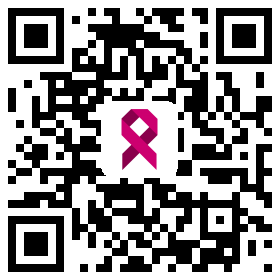

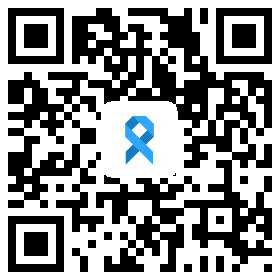

 苏公网安备32059002004080号
苏公网安备32059002004080号
